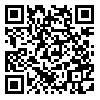BibTeX | RIS | EndNote | Medlars | ProCite | Reference Manager | RefWorks
Send citation to:
URL: http://ijict.itrc.ac.ir/article-1-450-en.html
2- Department of Computer and Electronic University of Shiraz
3- ICT Research Institute Tehran, Iran ,
Internet of Things (IoT) security and privacy remain a major challenge, mainly due to the massive scale and distributed nature of IoT networks. Smart home is considered one of the rather prominent applications of the Internet of Things (IoT), integrating high-levels of efficiency, home security, energy & cost saving to everyone’s life. In spite of all the benefits this technology provides, privacy and security are highly concerning issues that require more considerations. IoT-A reference architecture was established with the purpose of evaluating current sources and protocols, ensuring the compliance of things and protocols, and providing a comprehensive solution for different applications of IoT. This study was performed with the purpose of providing a general framework for improving security at all levels of design, implementation, and application of equipment and protocols using the IoT-A reference architecture by addressing the challenge of security in the Internet of Things and smart homes. This paper employs the term Security Framework to refer to a method for applying all technologies, procedures, software, and other components to provide security in smart homes. This research seeks to outline all the reference architecture's vulnerabilities and threats, following which an improved model for the reference architecture is proposed to meet all security requirements. Considering the theoretical evaluations performed in this study, the proposed framework, which was created by adding two components of threat and vulnerability management and field management while making some alterations to the licensing component, satisfies to an acceptable level the security requirements of the smart home and enhances the privacy of the IoT-based smart home.
| Rights and permissions | |
 | This work is licensed under a Creative Commons Attribution-NonCommercial 4.0 International License. |




